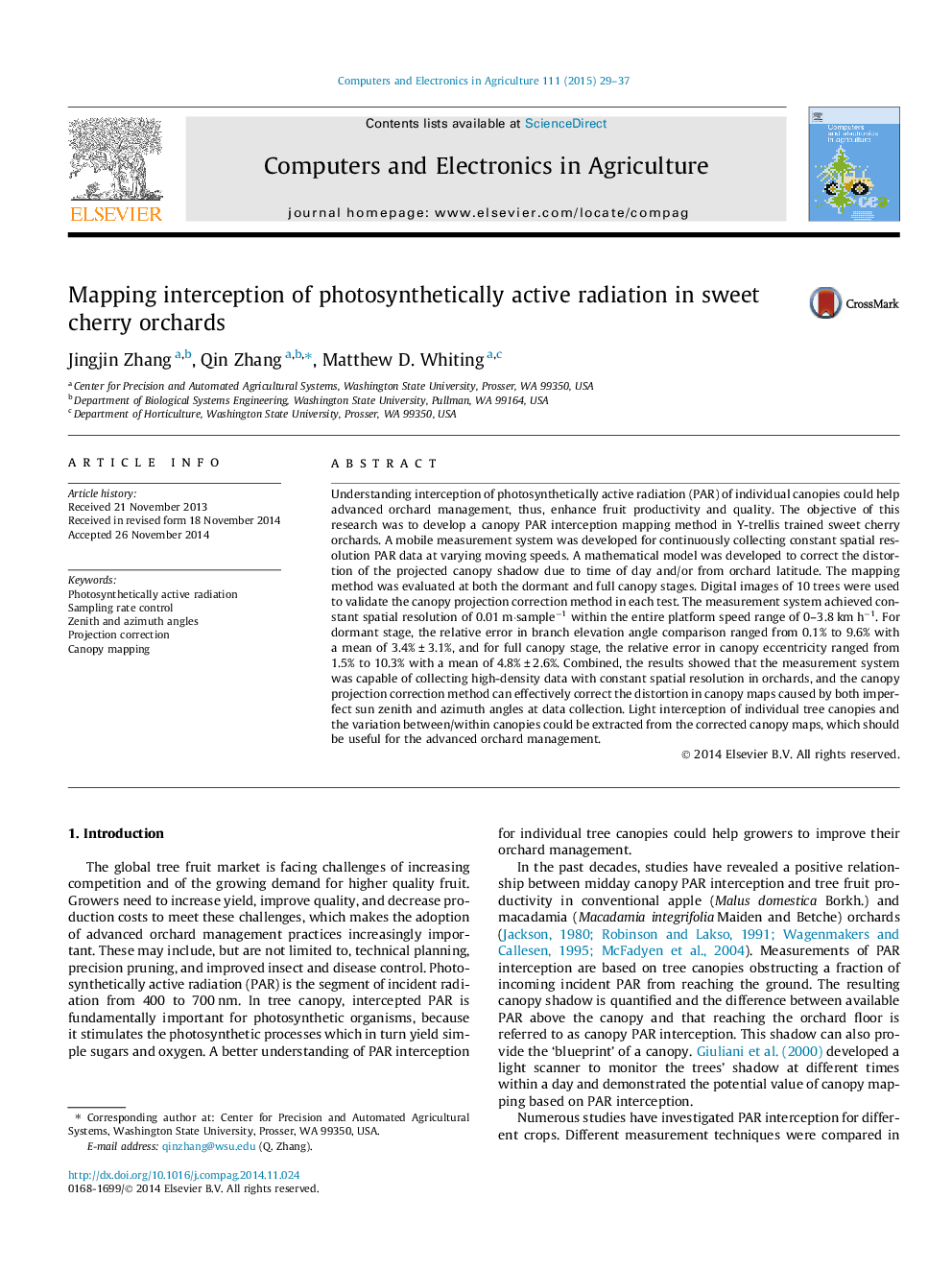| Article ID | Journal | Published Year | Pages | File Type |
|---|---|---|---|---|
| 6540848 | Computers and Electronics in Agriculture | 2015 | 9 Pages |
Abstract
Understanding interception of photosynthetically active radiation (PAR) of individual canopies could help advanced orchard management, thus, enhance fruit productivity and quality. The objective of this research was to develop a canopy PAR interception mapping method in Y-trellis trained sweet cherry orchards. A mobile measurement system was developed for continuously collecting constant spatial resolution PAR data at varying moving speeds. A mathematical model was developed to correct the distortion of the projected canopy shadow due to time of day and/or from orchard latitude. The mapping method was evaluated at both the dormant and full canopy stages. Digital images of 10 trees were used to validate the canopy projection correction method in each test. The measurement system achieved constant spatial resolution of 0.01 m·sampleâ1 within the entire platform speed range of 0-3.8 km hâ1. For dormant stage, the relative error in branch elevation angle comparison ranged from 0.1% to 9.6% with a mean of 3.4% ± 3.1%, and for full canopy stage, the relative error in canopy eccentricity ranged from 1.5% to 10.3% with a mean of 4.8% ± 2.6%. Combined, the results showed that the measurement system was capable of collecting high-density data with constant spatial resolution in orchards, and the canopy projection correction method can effectively correct the distortion in canopy maps caused by both imperfect sun zenith and azimuth angles at data collection. Light interception of individual tree canopies and the variation between/within canopies could be extracted from the corrected canopy maps, which should be useful for the advanced orchard management.
Keywords
Related Topics
Physical Sciences and Engineering
Computer Science
Computer Science Applications
Authors
Jingjin Zhang, Qin Zhang, Matthew D. Whiting,
